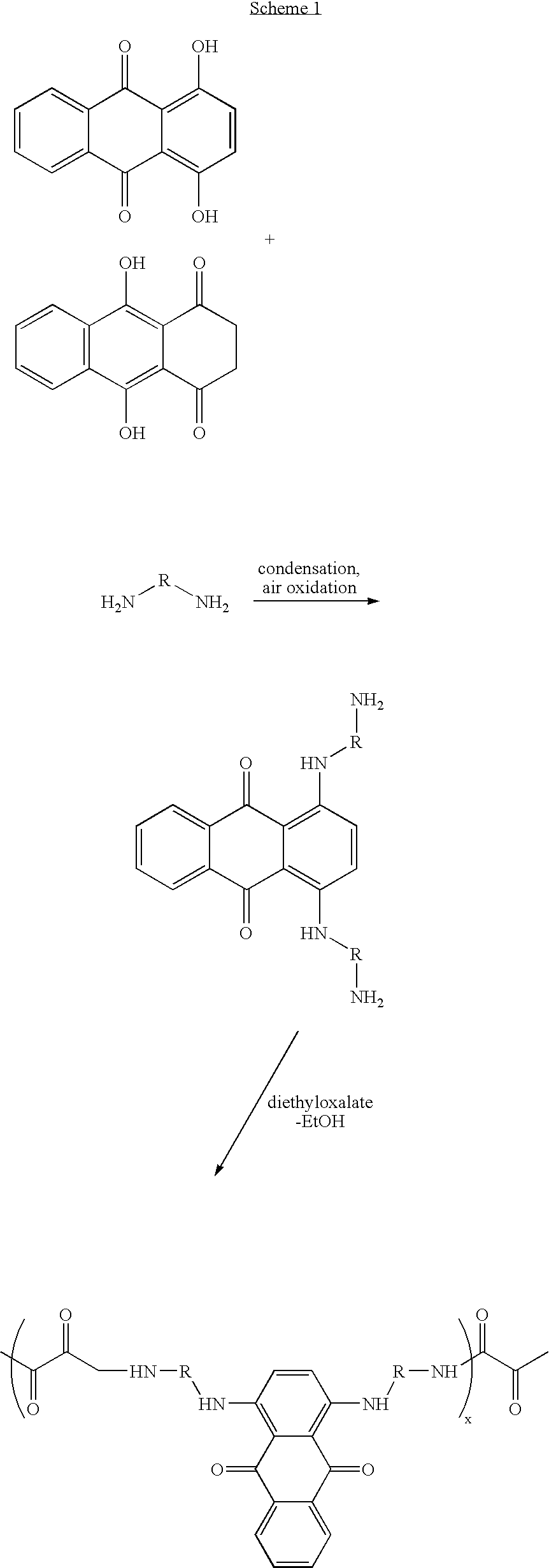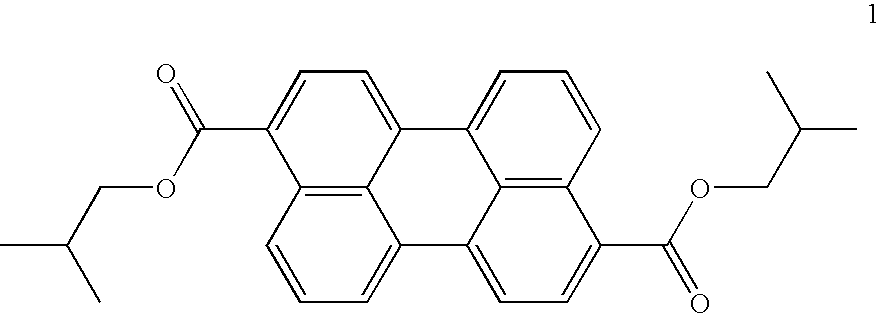Polymeric colorants
- Summary
- Abstract
- Description
- Claims
- Application Information
AI Technical Summary
Benefits of technology
Problems solved by technology
Method used
Image
Examples
example 1
This example demonstrates the in-situ formation of a reactive dye and the use of a pure polyamide resin. A reaction vessel equipped as described above was charged with 50 parts quinizarin, 5 parts leucoquinizarin, 100 parts isophoronediamine, and 100 parts Jeffamine XTJ-500. The reaction was heated to 125-130° C. for one hour to form the anthraquinone dye (see reaction Scheme 1). 73 parts of diethyloxalate was then slowly added, maintaining the temperature between 125 and 145° C. forming polyamide with the loss of ethyl alcohol. The resultant product was a friable blue resin which gave good clarity in polypropylene.
R=3-methylene-3,5,5-trimethyl-1-cyclohexylene (from isophoronediamine) polypropylene oxide (from Jeffamine)
example 2
To a reaction vessel described above under a nitrogen blanket, was added 20 parts Solvent Green 5 (structure 1, below), 60 parts polyethyleneglycol 300, and 2 parts esterification catalyst. The mixture was heated to 180° C. After 16 hours at 180° C., 42.5 parts of isophoronediamine and 60 parts adipic acid were added. The reaction was heated to 210° C. for 2 hours to complete the polymerization giving a yellow resin.
example 3
To a reaction vessel described above was added 82 parts of a naphthalimide dye 2 containing two reactive hydroxyl groups, 170 parts 1,4-cyclohexanedicaroxylic acid, 60 parts 1,4-cyclohexanedimethanol (90%), and 64 parts isophoronediamine. The reaction mixture was heated to 210° C. for 3 hours giving a yellow polymeric colorant.
PUM
| Property | Measurement | Unit |
|---|---|---|
| Fraction | aaaaa | aaaaa |
| Fraction | aaaaa | aaaaa |
| Percent by mass | aaaaa | aaaaa |
Abstract
Description
Claims
Application Information
 Login to View More
Login to View More - R&D
- Intellectual Property
- Life Sciences
- Materials
- Tech Scout
- Unparalleled Data Quality
- Higher Quality Content
- 60% Fewer Hallucinations
Browse by: Latest US Patents, China's latest patents, Technical Efficacy Thesaurus, Application Domain, Technology Topic, Popular Technical Reports.
© 2025 PatSnap. All rights reserved.Legal|Privacy policy|Modern Slavery Act Transparency Statement|Sitemap|About US| Contact US: help@patsnap.com



